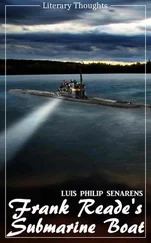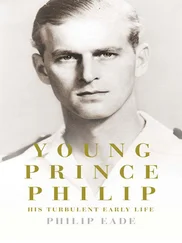Russians seeing this land for the first time were awed by the immensity of the lowering mountains — the highest in Europe — and by the precipitous valleys that harboured isolated communities that spoke a kaleidoscopic variety of languages and dialects. Some settlements grew crops or reared horses; others boasted smithies where chain mail was made and swords of wonderful workmanship and sharpness were crafted. Others again lived by trade and robbery. And all bred fighting men, skilled in ambush and raiding. In 1561 Ivan — who had lost his wife, Anastasia, a year earlier — married one of Prince Temriuk’s daughters. Two years later the leader of the Nogais, Mirza Din-Ahmed, married another of Temriuk’s daughters. This little web of dynastic marriages was to further Moscow’s ambitions in the south, and before long its advance was marked by the erections of fortresses in the Kabarda (1563) and at Terka on the river Terek (1567).
The social scene there was totally strange to Russian eyes. The Kabardinians were congeries of warlike clans, each headed by a landowning prince, each with his vassal gentry, all of them sustained by peasants and slaves. There was no overall chief, no hierarchical system of a sort familiar to Russians or Tatars. Seniority and fighting prowess earned deference, however. Raiding for slaves and trading in them was not uncommon (Istanbul provided a good market). As for religion, allegiance varied. Some of the mountain men were Christian, others were Muslim (at least nominally), a few were Jews (perhaps survivals from the Khazar Empire), and a good many were pagan animists. In fact religion was largely a political issue, a matter of alliances: of Ivan’s new in-laws, one brother became a Christian, most of the others remained Muslims, but religion and political allegiance were as yet quite independent.
And the Kabardinians were only one loose tribal grouping among many. There were also the Adyge to the west; the Darghins and Laks, the Kaytaks and Lezghins of Dagestan; and, beyond them to the south, the Tabasarans, Tsakhurs, Rutuls and Chechens — not to mention the Ingush, Ossetians and others. All were singular, all were warlike, and, like the Swiss in the time of William Tell, all were difficult (and sometimes impossible) to govern. If the Russians fully comprehended this variegated, seemingly anarchic, scene, they left little evidence of the fact at the time. 12Wisely, they did not attempt to control it. Instead, they set out to further their interests incrementally, by agreement. But, if they found the fragmented tribal political scene difficult to fathom, they understood the broader strategic realities very clearly indeed. Behind some of the Muslim tribal groupings of the Caucasus stood the might of the Ottoman Turks, who controlled the Crimean khan, the ally of hostile Poland. Moscow needed help to counter the power of this Turkish alliance, which was blocking its lines of advance to the west as well as to the south, and help could come only from Ivan’s nominal rival, the Holy Roman Emperor, Maximilian II of the House of Habsburg.
The Kremlin soon decided that practical strategic considerations must outweigh Russia’s theoretical claims to imperial primacy, and so Moscow’s relations with the Habsburgs became more cordial. Sacrificing its own unpromising claims to the elective throne of Poland, in the 1570s it supported the Habsburg candidate, Ernest. At the same time Moscow’s calls for the Emperor to join Russia in an alliance against ‘the enemies of Christ’s name’, the Muslim Turks and Tatars, became insistent. 13It was the beginning of a long-term strategy directed against the Ottoman Empire that was eventually to give rise, three centuries later, to the notorious ‘Eastern Question’.
The Cossacks employed to shore up Russia’s position in the Caucasus — and, more particularly, to secure a line along the river Terek — were irregulars. The word ‘Cossack’ (kazak) had originally denoted a freelance Tatar warrior, but by now the Cossacks were chiefly rootless Russian, Lithuanian and Polish subjects who had moved south to the new frontier lands, where they made a living as traders, robbers, mercenaries and colonists. Ivan’s government engaged them in increasing numbers because they were tough, cheap and biddable. For a patch of virgin land and an annual allotment of gunpowder and grain, or a few coins, they would do any patron’s bidding.
The Lithuanian magnate Dmitry Vishnevetsky established an entire colony of them on an island beyond the Dnieper rapids, just short of Crimean Tatar and Ottoman Turkish territory. In 1557 he offered his allegiance to Tsar Ivan, and so the Zaporozhian Cossacks became the Tsar’s subjects too. Four years later Vishnevetsky returned to his former Polish allegiance, but Moscow regarded the Zaporozhian Host as a Russian asset and protectorate. So did some of its members. The Cossack community of the Don also became subject to Moscow, and proved rather more stable in its allegiance than the Zaporozhians. Even so, it was regarded as overzealous in mounting raids against the Turks, for Moscow was held responsible for them. This could be dangerous as well as embarrassing, and so Moscow found it convenient to disown the Cossacks at times. Nevertheless their links, based on mutual interests, remained close. East and south of the Volga, too, the Tsar was again the biggest patron and beneficiary of Cossack activity.
Three categories of Cossack were soon discernible. One comprised members of autonomous communities, like the Don and Zaporozhian Hosts, which were defined by their own rules and customs, and acknowledged an obligation to the Tsar in return for subsidies. Another was the ‘town’ Cossacks, who, having kissed the cross in sign of loyalty to the Tsar, were allotted a salary and assigned for policing, defence and other duties to a particular town or dependent village. Cossacks of the third type were engaged as groups collectively. Usually pioneers or frontier settlers, they were given annual allotments of gunpowder, food and other necessities, and rights to farm a stretch of virgin land in return for defending the locality and turning out on campaign when required. Such were the men who were to guard the line of the river Terek, the frontier to the Caucasus, and the river Don to the west, on the far side of the Crimea.
The imperial implications of the conquest of Kazan and Astrakhan were not fully appreciated at the time, even though the strategic importance of the northern Caucasus was clearly understood. Indeed, it very soon brought Russia into confrontation with the great power south of the Caucasus, the Ottoman Empire. Hearing of Ivan’s intervention on the Terek, Sultan Selim II mounted an expedition to Azov, hoping to cut a canal through to the Volga and take Astrakhan, but this soon proved to be overambitious. Nevertheless, the Crimea to the west was an Ottoman client and allied to hostile Lithuania. These two powers blocked Ivan’s advance in both directions.
Although Russia valued Astrakhan as an emporium for silks from China and gems from India, the desert steppe of central Asia to the east was inhospitable and unwanted. Some groups of Bashkirs, who roamed the country to the east of the Urals and the north of the steppe, volunteered their submission soon after the conquest of Kazan, and the Russian government was to establish the fortress of Ufa in northern Bashkiria in 1586, though almost two centuries were to pass before colonization developed in that direction. 14Meanwhile the significance of Siberia, with all its riches, was hardly appreciated at all. Indeed the beginning of that great venture can be traced to the state’s granting exploitation rights to a private individual — a most unusual act by a regime whose characteristic administrative style was brutally direct.
On 4 April 1558 the Tsar granted a petition from Grigorii Stroganov, whose family had already grown rich through exploiting the salt pans of Solvychegodsk in north-eastern Russia and trading with the native peoples of the Great Perm region. Grigorii had established himself there only a few years before, but now he was given the rights to exploit the deserted region along the river Kama some 50 miles and more beyond Perm. Stroganov’s vision was as bright as that of any Western merchant venturer in the first decades of the new colonizing age, eminently practical and surprisingly entrepreneurial. He wanted to fell the region’s dark forests, and exploit its fish-teeming lakes and streams. He wanted to prospect for salt and other minerals, to encourage trade, and to make large tracts of the territory agricultural by encouraging the settlement of homesteaders not already registered for tax elsewhere. The scheme appealed to the Tsar.
Читать дальше





![Stephan Orth - Behind Putin's Curtain - Friendships and Misadventures Inside Russia [aka Couchsurfing in Russia]](/books/415210/stephan-orth-behind-putin-s-curtain-friendships-a-thumb.webp)





